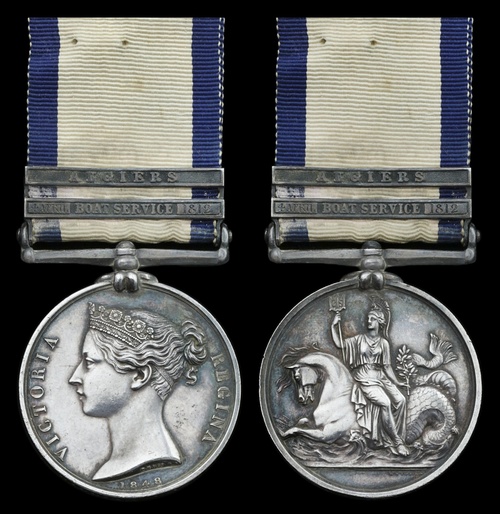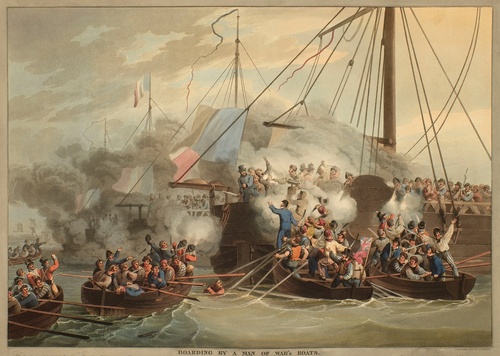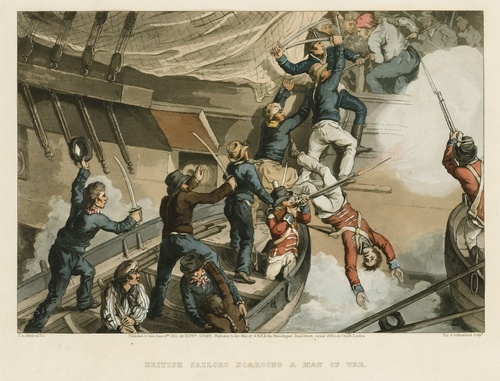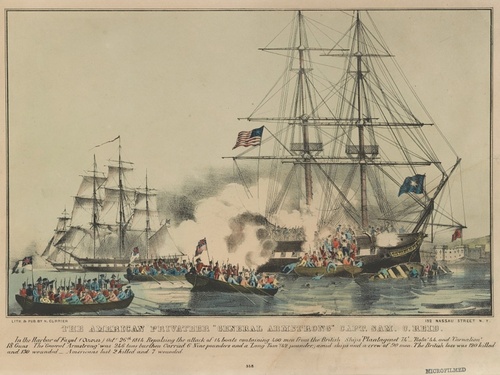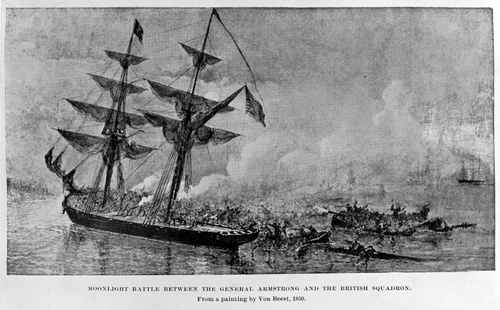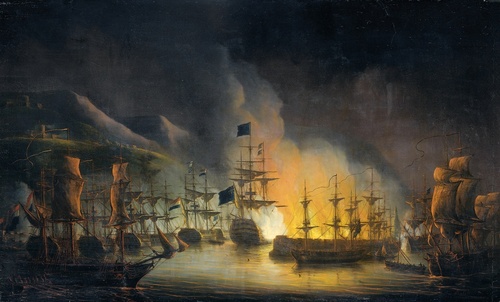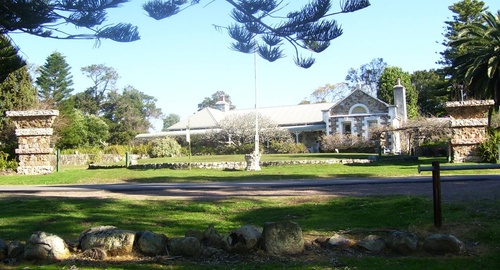Auction: 22003 - Orders, Decorations and Medals
Lot: 6
Sold by Order of a Direct Descendant
The fascinating and rare Naval General Service Medal awarded to Commander W. Caswell Royal Navy, who worked his way through the ranks from Able Seaman, having survived capture by Malay pirates, he commanded ships' boats in various cutting-out expeditions, was dangerously wounded during an attack on an American privateer and later went on to settle in New South Wales
Naval General Service 1793-1840, 2 clasps, Boat Service 4 April 1812, Algiers (William Caswell, Lieut. R.N.), clasps slightly bent, first three letters of surname officially corrected, otherwise good very fine
A unique combination of clasps.
4 'Boat Service 4 April 1812' clasps issued, this the only such award to an Officer.
William Caswell was born in August 1789, son of John and Anne Caswell. Most interestingly - considering his later career and advancement - he is noted as joining the Royal Navy in September 1805, as an Able Seaman (A Naval Biographical Dictionary: Caswell, William, W.R. O'Byrne, refers) and sent to H.M.S. Fox, a 32-gun frigate on the East India station. Despite his start on the lower-deck at the tender age of 16, the young Caswell must have made a good impression on his superiors as he is noted as a Midshipman a mere two years later - though it appears that during this time he was also captured by Malay pirates during a skirmish and imprisoned for eight months, from September 1807-April 1808 (ibid).
Returning to active service aboard Fox, Caswell commanded her barge at the cutting-out and capture of the French 8-gun privateer La Caravanne at Sappara - one of many small 'boat actions' he was to be involved with during his long and varied career. November 1811 saw him removed to the 36-gun frigate H.M.S. Maidstone, this time as Master's Mate - again an indication that Caswell was an intelligent and thorough seaman as he had successfully passed his examination for Lieutenant on the 6th of that month. However, from here he had to bide his time and wait for a suitable vacancy to become available. Sailing with Maidstone to the Mediterranean he was heavily involved in further small actions which only added to his laurels, commanding her launch at the capture of a 5-gun privateer before - on 4 April 1812 - being in charge of yet another boat at the cutting-out of the French 2-gun privateer xebec Martinet off the south-east coast of Spain; it was for this action that Caswell earned the clasp 'Boat Service 4 April 1812'.
Being next ordered to the North American station, almost exactly four months later, on 3 August, found Maidstone and Caswell on the North American station where he again distinguished himself in command of a boat from the ship which captured the American 6-gun revenue-cutter Commodore Barry (along with three privateer schooners) in the Bay of Fundy: in this action the American crews erected batteries on the shoreline and resisted the British attack for some time, inflicting casualties before retreating. On 26 April 1813 Caswell was finally appointed Acting-Lieutenant, clearly a well-deserved promotion and one which saw him posted to the 38-gun frigate H.M.S. Spartan, also on the North American station: an appropriate choice as Maidstone and Spartan had acted in conjunction in the capture of the Commodore Barry. However, upon confirmation of his promotion to Lieutenant he was next appointed to the 74-gun H.M.S. Plantagenet - a move that came very close to ending a hitherto full and exciting career.
The Battle of Fayal
In preparation for the Louisiana Campaign (culminating in the disastrous Battle of New Orleans on 8 January 1815), Plantagenet - along with the 38-gun H.M.S. Rota and 18-gun H.M.S. Carnation were ordered to set sail from Britain and join the fleet then assembling for the attacks and raids on American shipping and soil; however, upon reaching the Azores the small squadron spotted an unidentified ship in port at Fayal Roads - what turned out to be the U.S. privateer General Armstrong, of seven guns and 90 men. In a slightly complicated diplomatic situation, whilst Britain and Portugal were allies and Britain and the United States at war, Portugal and the United States were maintaining neutrality - and the General Armstrong was therefore anchored in 'safe' waters free from danger. Nevertheless, the senior British Naval officer (Captain Robert Loyd of the Plantagenet) ordered a boat under the command of Lieutenant Faussett to investigate. Accounts differ of precisely what happened next, but when Faussett's boat came too close to the American ship (whether through design or accident) the General Armstrong opened fire, killing two and wounding seven. Upon this, the boat pulled away and H.M.S. Carnation came in to open dialogue with the Americans. Seemingly failing to get anywhere with words alone, Carnation then dispatched four heavily-armed and manned boats towards their opponent. At this, the General Armstrong replied with heavy fire and repulsed the attack with heavy casualties - some estimates state 40 killed and wounded against a mere two American privateersmen.
An hour later, at 9pm, the British tried again - this time with 12 boats loaded with 180 sailors and marines from the whole squadron, with Lieutenant Caswell being one of the officers of that number; overall command of the attacking force was given to Lieutenant William Matterface. Unfortunately, due to the distance required to cover and a strong current it took almost three hours for the boats to come up with the American privateer - this gave the crew ample time to ensure their defences (including three cannon in a battery on shore) were as prepared and ready as possible. Despite outnumbering their opponent two-to-one, the attack was a disaster for the British: two boats were sunk before they could even get in range, two were captured, and significant numbers of boarders were killed by cannon, musket fire, and bladed weapons at point-blank range - indeed, Matterface was one of those killed and overall his command suffered nearly 130 casualties before withdrawing. Caswell was amongst the wounded; the General Armstrong was later scuttled by her crew, and the British squadron resumed its' voyage to North America.
Caswell is next noted (recovered from his wounds) as a Lieutenant on the 74-gun H.M.S. Superb from 7 September 1815; he was present with her for the Bombardment of Algiers on 27 August 1816, for which action he received his second Clasp. Superb was very much in the thick of the fighting: consequently her masts and yards were badly cut-up and she suffered a number of casualties.
After escaping unscathed in this engagement, Caswell remained in naval employment for a number of years - serving on the Jamaica station in the sloop Surinam; off Africa in the 20-gun Bann; and by mid-1825 was serving in the 42-gun Hyperion on coast blockading duties.
Later Life and an Australian Pioneer
Placed on Half-Pay in 1828, three years previously he had married one Susan Hoddle - interestingly her brother later became the first surveyor-general of Victoria, New South Wales, and this may well have had some bearing on William and Susan's decision to emigrate to Australia later that year. Being awarded a grant of 50 acres of land as a reward for his military service, the Caswell's settled on the Tilligerry Peninsula near Port Stephens N.S.W. and built a house (with assistance from convict labour) named 'Tanilba'. Fascinatingly 'Tanilba' still exists: it is the oldest building in Port Stephens and one of the oldest in the whole of Australia. Early colonial life, however, was tough on the Caswell's and their growing family - indeed William's desire to build a grand house eventually saw him bankrupt and move to 'Balikera' on the Williams River. During a journey back to Britain William Caswell died, on 29 April 1859, at the age of 70.
For further reading, the following sources are to be recommended:
https://www.freesettlerorfelon.com/william_caswell.htm
https://www.antipodean.com/pages/books/17346/new-south-wales-port-stephens/land-claim-of-commander-w-caswell-r-n-papers-relative-to-early-free-british-settler-in-new-south?soldItem=true
Subject to 20% VAT on Buyer’s Premium. For more information please view Terms and Conditions for Buyers.
Sold for
£11,000
Starting price
£3000

